Multiplication arrays: Definition with Examples
reviewed by Jo-ann Caballes
Updated on November 5, 2024
Multiplication array is a medium through which young learners can express and calculate multiplications between two numbers.
This article defines array in math, gives relevant array examples, and provides practice questions to help your child get better at multiplication.
What is an array in math?
We define an array in math as a table made up of rows and columns used to represent mathematical elements. A row is a horizontal straight line extending from left to right and a column is a vertical straight line going from up to down. In this article, we will be going over how to use an array in multiplication.
What is a Multiplication Array?
A multiplication array is a table that expresses numbers in rows and columns and helps us find the product of numbers when the objects within it are counted.
Multiplication arrays are mostly helpful for beginners who are just getting started in their multiplication journey.
Multiplication array definition in math
In math, the multiplication array is the most widely accepted form of visualizing multiplications between numbers — this visual representation of multiplication is a good way to improve the fundamental training in multiplication for youngsters.
How do we represent multiplication arrays in math?
We represent multiplication arrays by using objects to express figures in each row and column. We can use the actual figures too but for this example, let’s use the circle shape.
If we were to represent 3 x 5 with the array multiplication, here’s how it would look:
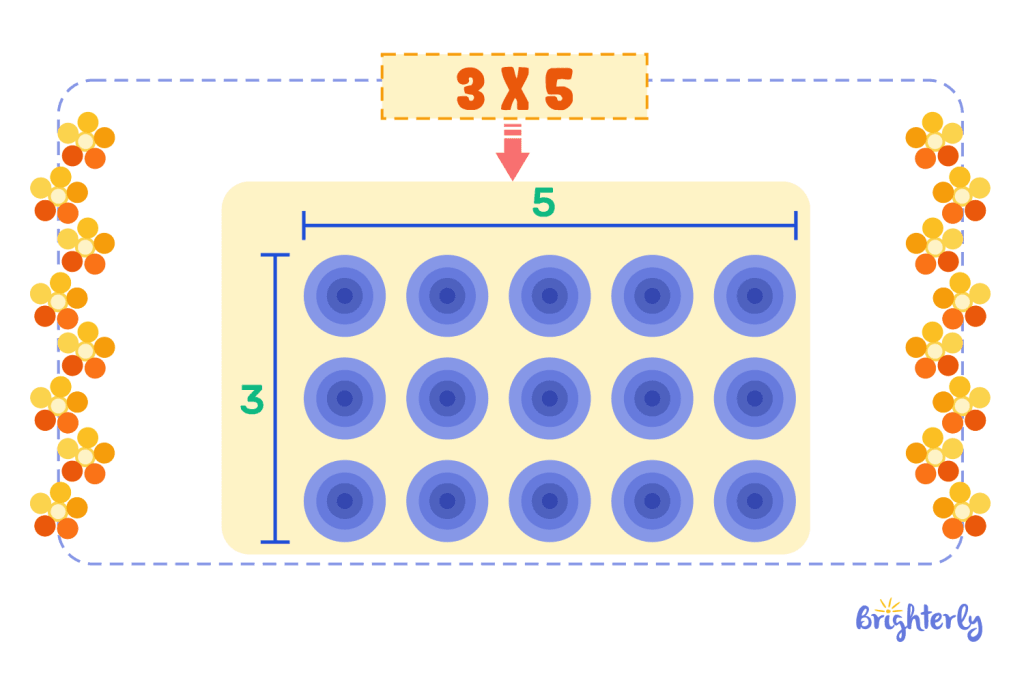
This multiplication array shows 3 in columns and 5 in circles, to find the answer we would need to count all the circles in the array, which will give us a total of 15.
Factors and products in multiplication arrays
Factors are numbers we use in multiplications and products are the results we get from multiplying two or more numbers.
In the equation 2 x 5 = 10, 2 and 5 are factors and 10 is the product.
Commutative multiplication property is the mathematical property that states that a product remains the same even if we were to change the order of the factors.
Take for example 2 x 7:
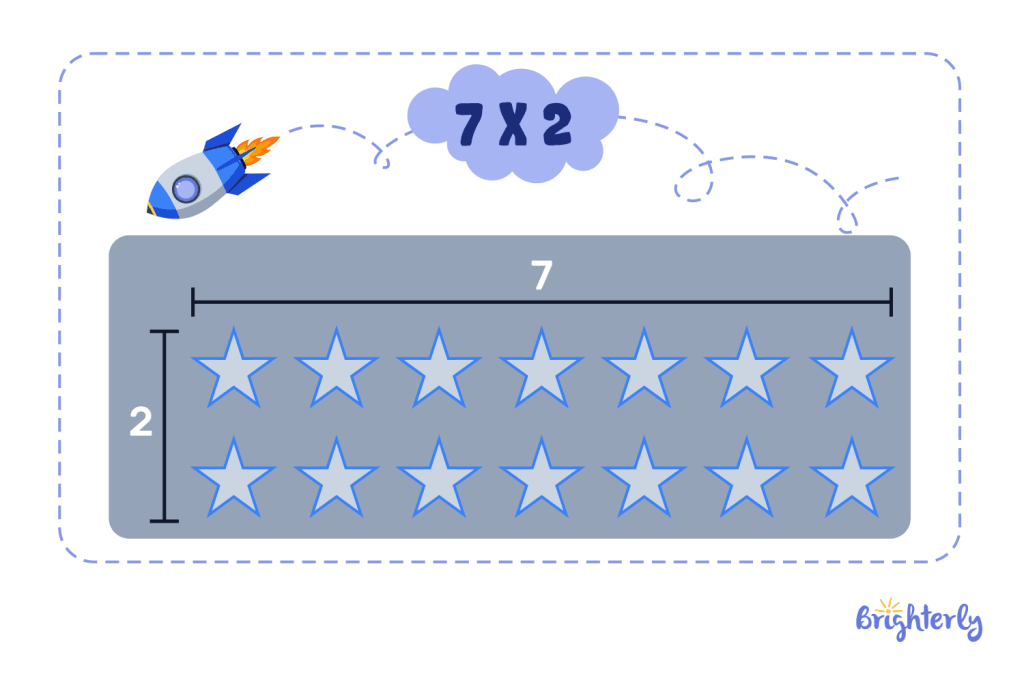
This image shows us 2 in rows and 7 in columns. After counting the total is 14 but if we were to switch the factors to 7 x 2:
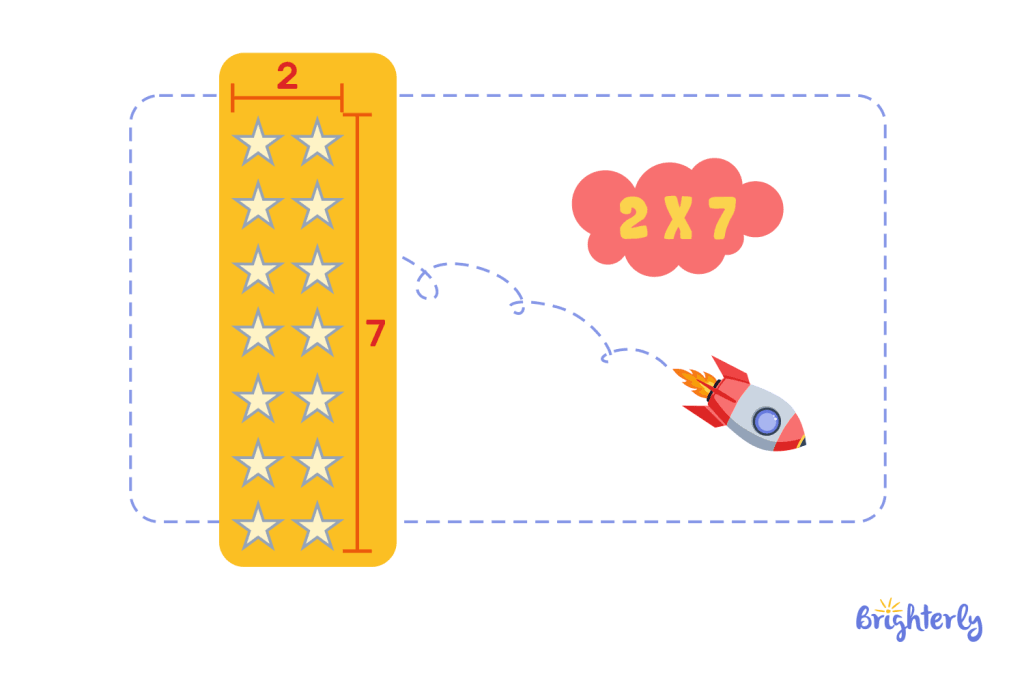
The answer still remains 14. Therefore, the order in which we draw our multiplication arrays makes no difference — advise your students to use whatever order works best for them.
Note that the commutative multiplication property works the same even if dealing with 3 or more factors.
Solved Math Tasks: Examples
Here are some practical examples that show how to use arrays for multiplication.
Array multiplication: Solved math problem 1
Which of these is a multiplication array for 3 x 5:
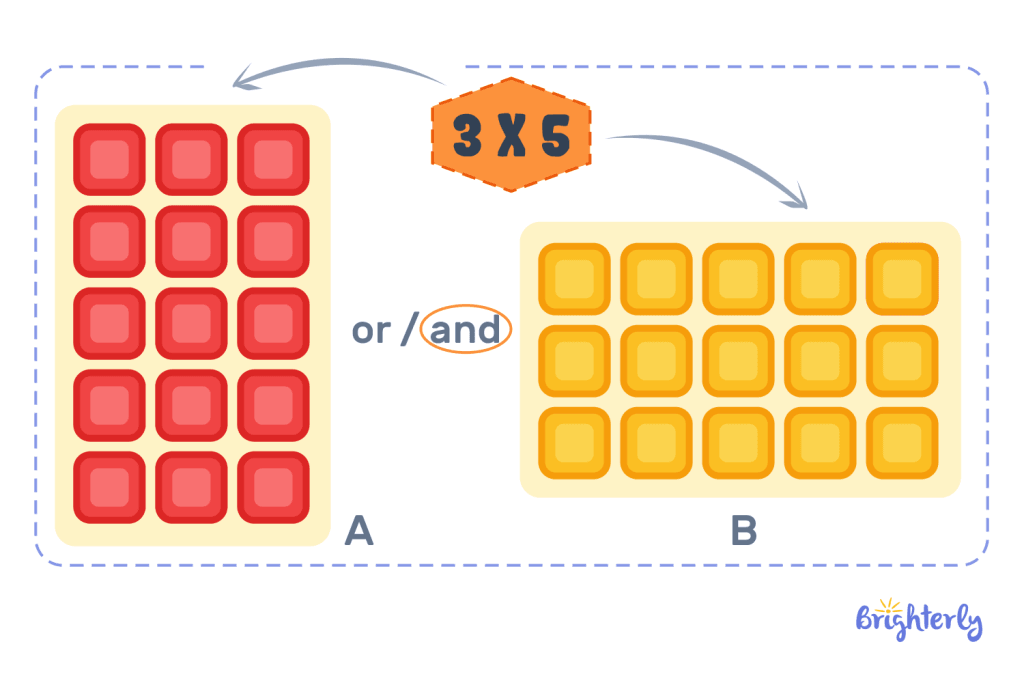
- The one on the left
- The one on the right
- Both of them
Answer
| Both of these images can be a multiplication array for 3 x 5. |
Array multiplication: Solved math problem 2
Which of these statements is true:
- The product remains the same regardless of how the factors are arranged.
- The product is different every time we rearrange the order of the factors.
Answer
| The first statement is true. |
Remember that the commutative multiplication property states that we can arrange the factors for multiplication in any order and the results will remain the same.
Array multiplication: Solved math problem 3
From the two images below, which of the two can be used to express the multiplication array of 2 x 3:
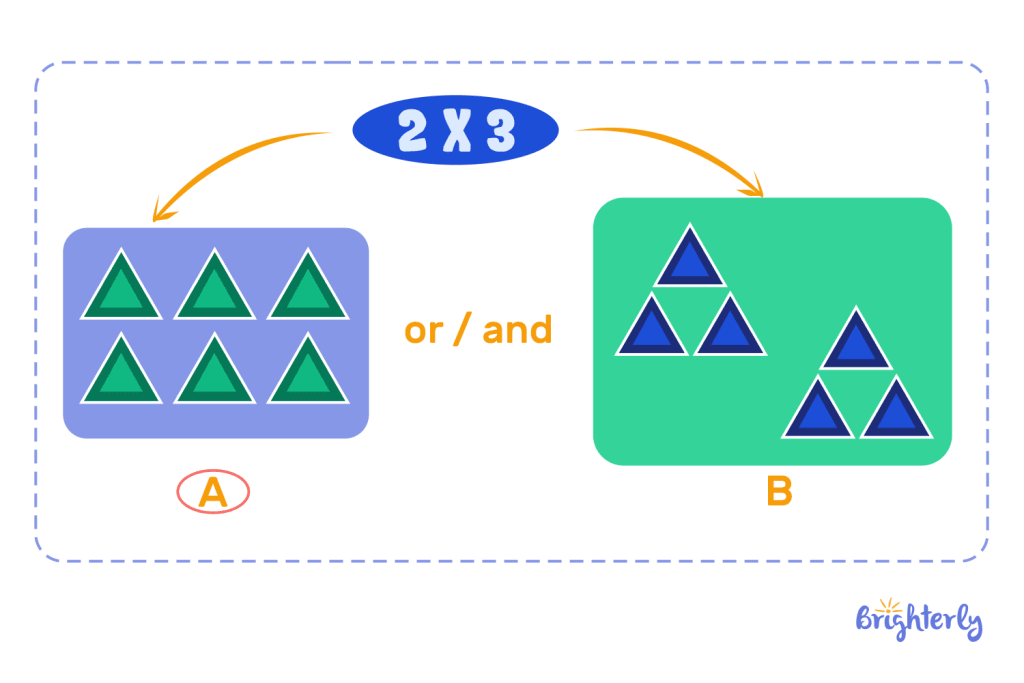
Answer
| A is the correct answer since it is an example of a multiplication array. |
Remember that a multiplication array is represented in rows and columns by images or shapes.
Array multiplication: Solved math problem 4
Using a multiplication array, what is the product of 3 x 4?
Answer
To get the answer, we would draw our multiplication array chart with 3 in rows and 4 in columns, then count the total amount of objects in the array.
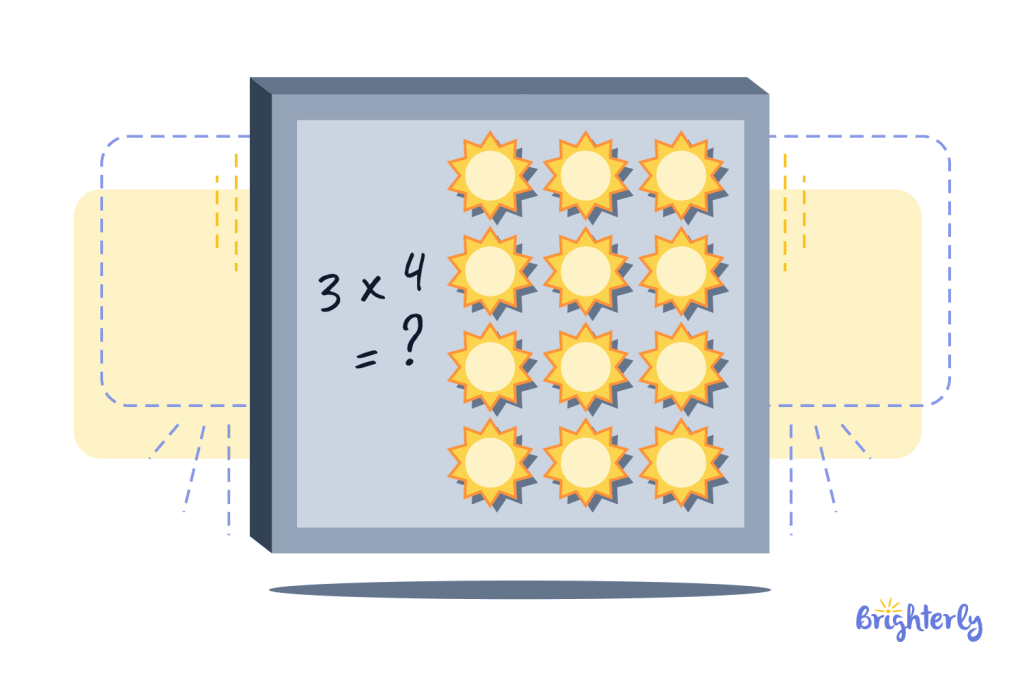
The total is 12, therefore 3 x 4 = 12.
Multiplication arrays: Practice Math Problems
Multiplication arrays: worksheets
Have your child work on practice lessons to improve their understanding of array model multiplication, array definition in math, and other number operations through Brighterly’s free worksheets:





